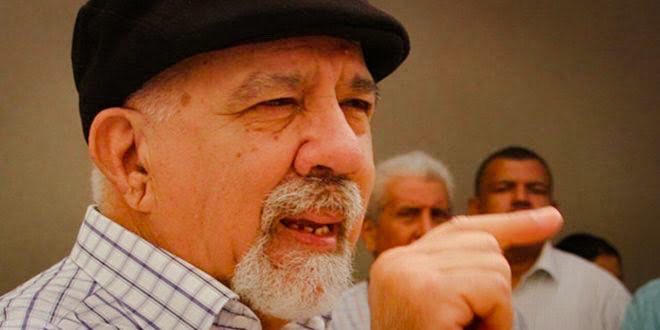Uruguay has been struggling with suicide for years, a problem that places the country among the top twenty in the world and the one with the highest figures in all of the Americas.
2021 was a particular year because it was the second in the framework of the health emergency and the one that reached record numbers in this type of death, even surpassing the records of 2002, a year marked by the economic crisis and its social consequences. Last year, 758 suicides were registered, which is equivalent to a rate of 21.39 suicides per 100,000 inhabitants.
The data exceeds the figure reached in the crisis at the beginning of the century, which was 20.6 per 100,000 inhabitants and, on the other hand, is explained by the increase in self-elimination in men.
The sociologist, teacher, researcher at the University of the Republic and member of the Group for the Comprehension and Prevention of Suicidal Behavior in Uruguay, Pablo Hein, analyzed the subject and delved into some aspects.
Eternal and constant duel
In the first place, he referred to the role that the pandemic played in this issue. One of them is that Uruguayans “learned little” about the health situation in relation to these issues, which not only involve suicide, but also the processes of death and mourning. “We learned little to culturally transit these instances of pain and mourning that we had as a result of the pandemic,” he assured. The expert explained that the suffering or mourning of the family that suffers this type of death is “eternal and constant” because those close to the victims cannot find an explanation for death, a process that collaborates with mourning. “When a death occurs, what we do is try to explain that event, how it happened, what it was, to address the stage of pain. So, when we manage to understand, we begin to go through the pain and the pain in mourning. Grief is a collective process, it is a ritual. If I manage to explain that death, surely that duel will have a much more harmonious collective, cultural and social transition. In the case of suicide, the victims or the survivors cannot find an explanation for that death because it is violent, unexpected”, he analyzed. “As a sociologist, I have a collective perspective of the phenomenon. We continue to be concerned about the topic’s focus (only) on mental health and individual behavior. The question we must ask ourselves is: why is this phenomenon stable 30 or 40 years ago? If it is an individual problem, why does it remain stable? Why do we have the most important rate in the Americas from Canada to Argentina? ”, He questioned.
In this sense, Hein said that no parameter or characteristic of Uruguay explains the high rate of suicides, but that the pattern is “cultural and social”, although the factor “is not unique”. “The countries that managed to stop or reverse the cause had a differential behavior. One thing is prevention, intervention and post-vention, which basically works with the family. There is no exclusive determinant,” he explained, highlighting Chile and Colombia as examples.
Parameters
The sociologist asked not to compare himself with the Guyanas or with Ecuador because the mortality record of these countries is “very weak.” In his opinion, Uruguay should be measured against Chile, Argentina, Canada, the United States or Cuba, which have better records. “Cuba has an index that in the imaginary is considered high, but six or eight years ago it managed to lower it with a strong prevention policy, in the family doctor. It unpacked the issue of emergency,” he commented. Uruguay’s location among the twenty countries with the highest suicide rates “is not necessarily due to the good record we have, because if you delve into this issue, medical underreporting of suicide is also detected,” the sociologist pointed out. “If we look at the suicide figures and divide the population into three large strata, we have the problem concentrated in the elderly, those over 60-65 years of age,” he said. And although the rate in young people between 15 and 19 years old “does not reach two digits”, the sociologist reflected on some of the causes that could cause it. “Youth suicide is a problem of the adult world, it is not a problem of young people. It is the adult world that puts them tests or adventures, homogeneous to all of different strata. The two great tests are the incorporation into the adult world: work and the sexual world. So, we measure all young people with the same yardstick, and not only all young people, but men and women, and men and women reach that top differently. The girl arrives much more harmonious with her body, the man is clumsy, “he added. Finally, Hein ended the talk stating that Uruguay necessarily has to work on prevention, intervention and post-vention, and on the collective approach to the problem. He stressed that there has been a change in society in which the contexts of suffering must now be resolved alone and not collectively. “The collective doesn’t matter anymore. So, in some way, personal experiences delimit what is harm, what is suffering, and what I can no longer stand”, he concluded.
Suicide in young people
Depression and suicide are a serious problem in the adolescent and young population (14 to 29 years old) in our country. According to the National Survey of Adolescence and Youth (ENAJ) 2018, 14.2% of young people stated that they had felt sad or desperate for two weeks in a row or more to the point of stopping carrying out their usual activities. There is an increase of 4 percentage points compared to the ENAJ of 2013, where this figure was 10.4%. On the subject, the director of the INJU, Felipe Paullier, said: “»We have to break the damn record that our country has in terms of suicides in adolescents, and we have to talk about emotions, about emotional health. There is a lot to build », he pointed out. In that sense, Paullier said that young people who were victims of bullying or mistreatment, violence or discrimination, “are more likely to have ideas or attempts to self-eliminate.”
It is very sad to have to give this type of news, and we should not write so often on this subject, but the reality is undeniable and it continues to hit us hard… there are clearly no recipes or magic solutions to solve this great scourge, but we owe everyone you seem to have greater tools to fight this war. For now the numbers are scary and we can’t keep looking to the side.
Juan Prandi







